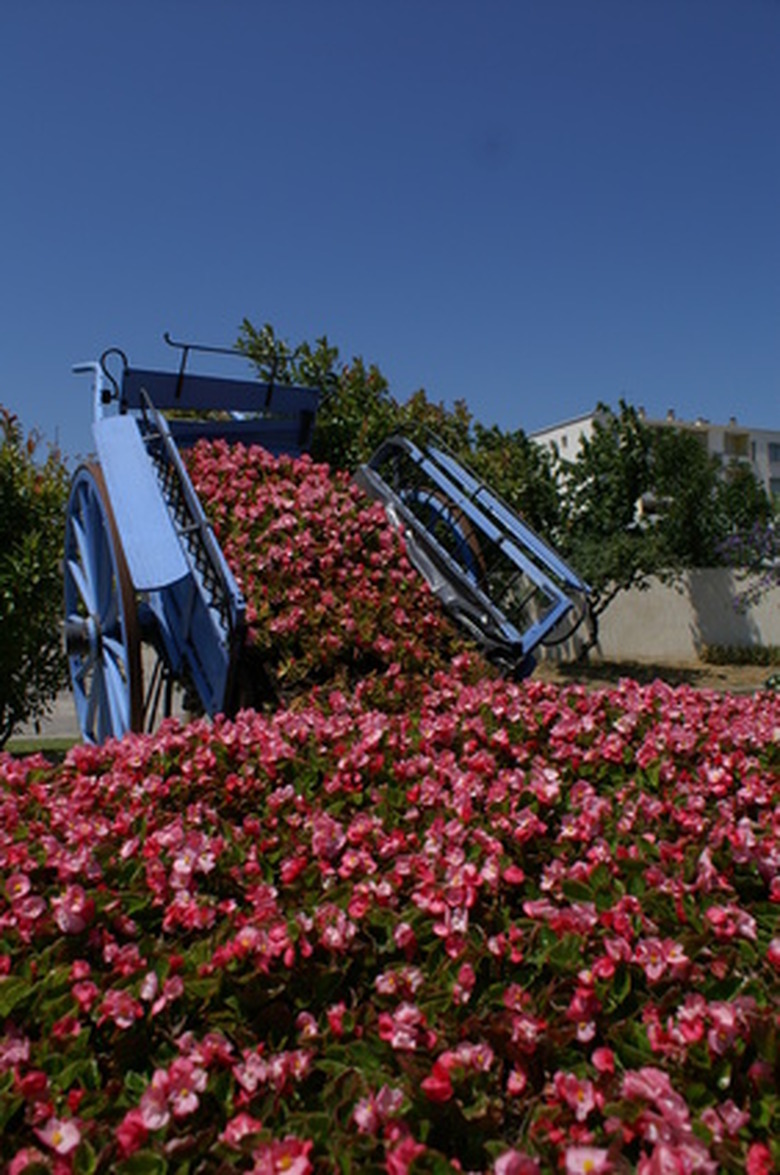Proper Spacing Of Wax Begonias
Wax begonias–also called fibrous begonias–are bushy, compact plants with fleshy, waxy leaves that are green or bronze in color. While most temperate climate gardeners recognize these plants as summer bedding annuals, lack of a killing fall or winter frost allows them to grow as a short-lived perennial. Typically classified as a "Semperflorens Group" begonia, wax begonias grow best in a fertile, crumbly, well-drained soil rich with organic matter in full sun to partial shade situations.
Significance
According to the American Horticultural Society's "A-Z Encyclopedia of Garden Plants," modern varieties of wax begonias are complex hybrids derived from at least three different begonia species. Thus, great variation exists in individual variety mature sizes, form/habit, or light and soil tolerances. Closely noting any literature such as labels, fact sheets or other data on wax begonias purchased provide insight into proper spacing when planting.
Size
Generally speaking, most selections of wax begonias to grow 8 to 15 inches tall and equally as wide in one growing season. When reading plant labels of seedling transplants at nursery, take note of any specific information on unusual growth characteristics. For example, some wax begonia plants may develop upright, oval growth shapes while others genetically stay compact or low, perhaps becoming broader than tall when mature.
- Wax begonias–also called fibrous begonias–are bushy, compact plants with fleshy, waxy leaves that are green or bronze in color.
- According to the American Horticultural Society's "A-Z Encyclopedia of Garden Plants," modern varieties of wax begonias are complex hybrids derived from at least three different begonia species.
Spacing
According to North Carolina State University, space annual flowers the same distance from each other as their expected mature height. For wax begonias, that means planting them roughly 10 to 15 inches apart from each other, when measured from center-to-center of plants.
Planting Configurations
When planting wax begonias en masse, two orientation configurations are employed by gardeners. The first is a straight-line grid with plants positioned so that the rows and plants are geometrically perfect. Four plants are positioned so that they look like the corners of a square. Alternatively, you can stagger the plants so when viewed from above, three plants form the corners of a triangle. Visually, the staggered configuration looks better as it reduces bare soil exposure, but often more plants are needed to plant an area with the staggered pattern than with a straight box-row pattern.
- According to North Carolina State University, space annual flowers the same distance from each other as their expected mature height.
- For wax begonias, that means planting them roughly 10 to 15 inches apart from each other, when measured from center-to-center of plants.
Considerations
Wax begonias grow their best and fullest when the soil is moist and fertile and in partial sunlight. If you plant wax begonias in sandy soils, hot sunlight or where irrigation isn't available, expect plant growth to be stunted in comparison to plants grown in ideal conditions. Thus, in sandy soil you may choose to space wax begonias slightly closer together to create a denser display, such as 6 to 10 inches apart. If begonias become crowded or too tall, keep in mind that the fleshy stems can be pinched back to a smaller size; the plants will sprout new branches, leaves and flowers for a renewed, fresh display.
References
- "A-Z Encyclopedia of Garden Plants"; Christopher Brickell and H. Marc Cathey, eds.; 2004
